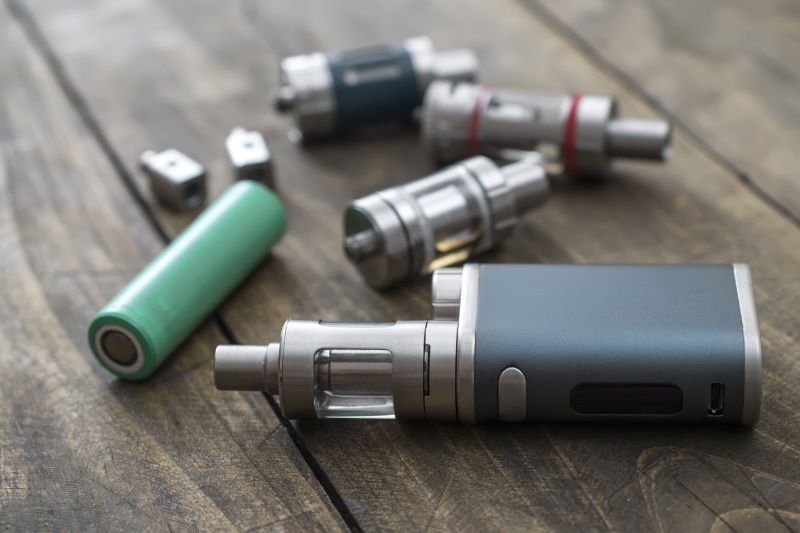Science
Study Reveals Vaping Device Design Fuels Young Users’ Habits

Research conducted by Dr. Robin Quigg at the University of Otago highlights how the design of vaping devices contributes to their widespread acceptance among young people, particularly within Māori communities. The study examined the vaping habits of participants aged 18 to 26, revealing alarming trends regarding the ease of use and concealment of these devices.
Dr. Quigg’s research gathered insights from seven whakarōpū (collective groups) within a kaupapa Māori framework, focusing on the context of vaping among young Māori individuals. The findings indicated that vaping has become normalized, with many participants reporting they feel comfortable using these devices in various public settings, including libraries, club rooms, and lecture theatres. “It was normalised to vape anywhere,” stated Dr. Quigg, who is affiliated with the Ngāti Raukawa iwi (tribe).
A significant portion of the respondents—over half—had never smoked cigarettes but were currently using or had previously used vaping devices. They noted that the discreet nature of these devices encourages ongoing use and potential nicotine addiction. “Our findings suggest the design of vaping devices, particularly their discreteness, has fostered vaping’s normalisation and continuing uptake by young people,” Dr. Quigg remarked.
The study also uncovered instances of vaping occurring in culturally significant locations. Some participants reported witnessing individuals using vaping devices in sacred areas, such as the urupā (burial grounds), marae (community meeting grounds), and inside the wharenui (meeting house). One individual commented, “I see people walking around the whole marae complex and vape, even on the ātea,” while others expressed concern that such actions contradict tikanga (cultural practices).
Despite many marae implementing designated vaping areas, some remain strictly auahi kore (smokefree). In general public areas, compliance with designated smoking zones appears inconsistent. “You would see a lot of people who are smoking cigarettes move out to the [smoking] zone, but a lot of people who are vaping won’t,” one participant noted.
In response to these findings, Dr. Quigg advocates for tighter regulations governing vaping devices. She emphasizes that current policies struggle to keep pace with the evolving landscape of nicotine products in Aotearoa, New Zealand. Dr. Quigg calls for stricter regulations on device design, suggesting measures such as larger sizes, therapeutic rather than lifestyle-oriented designs, and flavors that produce less appealing scents.
Implementing these changes could reduce the concealability of vaping devices and help maintain the integrity of indoor environments, such as libraries and lecture theatres, as well as outdoor spaces designated as smokefree, including urupā and playgrounds.
Dr. Quigg further asserts that regulating the design of vaping devices alone will not sufficiently protect young people. “Instead, stronger measures must be implemented to reduce the appeal of vaping,” she concluded. Her research underscores the urgent need for regulatory action to address the challenges posed by the increasing normalization of vaping among youth in New Zealand.
-

 World1 week ago
World1 week agoPrivate Funeral Held for Dean Field and His Three Children
-

 Top Stories2 weeks ago
Top Stories2 weeks agoFuneral Planned for Field Siblings After Tragic House Fire
-

 Sports3 months ago
Sports3 months agoNetball New Zealand Stands Down Dame Noeline Taurua for Series
-

 Entertainment3 months ago
Entertainment3 months agoTributes Pour In for Lachlan Rofe, Reality Star, Dead at 47
-

 Entertainment2 months ago
Entertainment2 months agoNew ‘Maverick’ Chaser Joins Beat the Chasers Season Finale
-

 Sports3 months ago
Sports3 months agoSilver Ferns Legend Laura Langman Criticizes Team’s Attitude
-

 Sports1 month ago
Sports1 month agoEli Katoa Rushed to Hospital After Sideline Incident During Match
-

 World2 weeks ago
World2 weeks agoInvestigation Underway in Tragic Sanson House Fire Involving Family
-

 Politics2 months ago
Politics2 months agoNetball NZ Calls for Respect Amid Dame Taurua’s Standoff
-

 Top Stories2 weeks ago
Top Stories2 weeks agoShock and Grief Follow Tragic Family Deaths in New Zealand
-

 Entertainment3 months ago
Entertainment3 months agoKhloe Kardashian Embraces Innovative Stem Cell Therapy in Mexico
-

 World4 months ago
World4 months agoPolice Arrest Multiple Individuals During Funeral for Zain Taikato-Fox





















